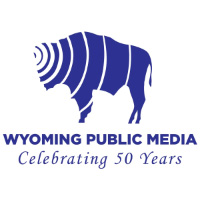“Pop quiz, hotshot. There’s a bomb on a bus. Once the bus goes 50 miles an hour, the bomb is armed. If it drops below 50, it blows up. What do you do? What do you do?”
A former police officer turned villain played by Dennis Hopper posed this question to Keanu Reeves in the excellent mid-90s action flick Speed. The electric grid, our country’s biggest machine, is basically that bus.
As anyone over the age of 25 should remember, it was a tense hour and a half, but it all turned out okay. Spoiler: Keanu Reeves and Sandra Bullock managed to get all of the passengers to safety and save the day – and share a passionate public kiss in the process.
Our grid runs at a specific speed too – its frequency – and if it gets too high or too low, the system wants to explode. Luckily, the electric grid has its own Keanu Reeves and Sandra Bullock, built right in, to keep it running at the right speed. Let’s explain.
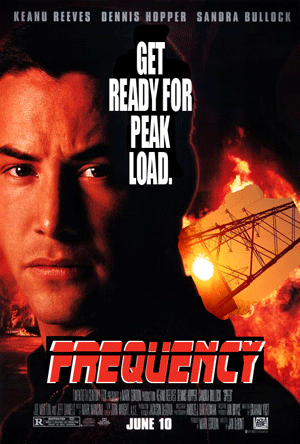
Jordan Wirfs-Brock / Inside Energy
Get ready for the next summer blockbuster: FREQUENCY.
Frequency and the electric grid in a nutshell
The grid, and everything connected to it – power plants, power lines, even your home appliances – are designed to work at a specific frequency: 60 Hz. As the electric grid constantly adapts to changes in how much energy people are using and how much energy is being generated, frequency fluctuates. Typically, it stays within a safe range, thanks to the built-in inertia of hydro, coal and natural gas plants and practices like load shedding. But when the system deviates too far from 60 Hz, things can go haywire, leading to massive blackouts. The same thing that makes our electric grid reliable – it is large and interconnected – also makes it vulnerable.
When it comes to the grid, what does frequency mean?
A hundred years ago, when electricity on a grand scale was new, two systems, alternating current (AC) and direct current (DC), competed for dominance: AC won, and that’s what we have today.
Alternating current is just what it sounds like – it flips back and forth: Electrons moving down an AC wire travel first in one direction, then back in the opposite direction. And our system here in the U.S. alternates 60 times a second, or 60 Hz. That’s what we mean when we talk about ‘frequency’ in relation to our electric grid.
Listen to the grid: This clip starts with a 60 Hz tone, then transforms into the sound of a substation, also vibrating at 60 Hz.
Much of the rest of the world, however, has a grid that runs at 50 Hz. For example, if you have ever traveled to the UK or Quebec – though not the rest of Canada – you needed an adapter to plug in your hair dryer or phone charger.
So why does frequency matter for our electric grid?
If our grid frequency deviates too far from 60 Hz – up or down – as in Speed, things get crazy.
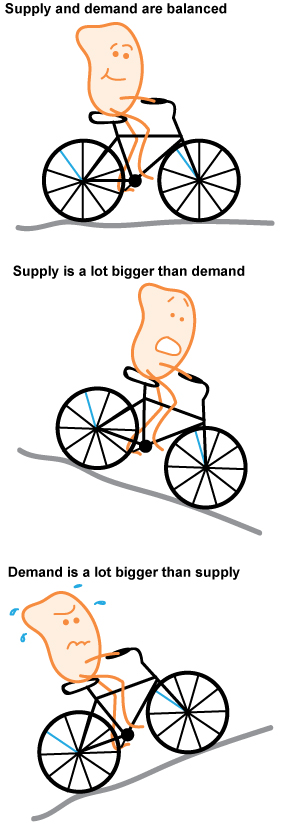
Jordan Wirfs-Brock / Inside Energy
The electric grid is like a bicycle that you have to pedal at a rate of 60 Hz. When supply and demand are in balance, it’s like pedaling on flat, easy ground. When supply exceeds demand, it’s like speeding downhill out of control. When demand exceeds supply, it’s like biking up a strenuous hill. Jordan Wirfs-Brock | Inside Energy
The electric grid is a giant balancing act between demand, how much power homes and businesses are using, and supply, how much power all of the coal-fired power plants, solar panels, etc., are generating. If there’s more demand than supply, the frequency drops; if there’s more supply than demand, frequency goes up.
To better understand this frequency stuff, we called up Dr. Richard Brown, the guy who literally wrote the book on grid reliability. He compared the role of frequency to riding a bike. The person is the power plant and the bike represents things like power lines. The speed at which your feet pedal? That’s your frequency, which has to stay close to 60 Hz – so you have to pedal at the same cadence, no matter what.
The slope you are riding on represents electricity usage: people turning on their lights, pool pumps, and everything else that draws electricity from the grid. When people use more power, this hill gets steeper. Remember, your feet can’t slow down, so you are going to have to pedal a lot harder to keep going up the hill. On the electric grid, this means that grid operators need to bring more power online.
Changes in frequency are happening constantly, like every time you turn on your air conditioner, and every time you run your clothes dryer. Usually, the grid can handle these small changes. How? Traditional power plants including coal, natural gas, and hydro acts as shock absorbers. They have spinning parts that can rotate slightly faster or slower to help balance out supply and demand. This is thanks to a concept called inertia, which we explained in an earlier IE Question.
But when inertia isn’t enough, when the grid can’t absorb these fluctuations, frequency gets too high or too low and things can get very, very dark.
What do big changes in frequency look like?
If you are hanging out at home, it can look like a blackout.
When a lot of people are using electricity, and there isn’t enough power on the grid to meet that demand, frequency can drop. Utilities can disconnect neighborhoods to lighten the load and avoid damaging expensive grid equipment. If you are in that neighborhood, you’ll lose power. But for everyone else, things should keep humming along. This is an un-fun term known as load shedding, and it happens all the time.
Sometimes, when the gap between how much electricity we’re using and how much we’re making is really big, load shedding doesn’t work. That’s when the grid enters what Dr. Brown calls a “death spiral.”
Let’s go back to the bike analogy, but this time make it a tandem and add nine of your friends. Each rider is a power plant, and they all have to pedal at the same rate. As the hill gets steeper and steeper, eventually, the weakest rider will get fatigued and will stop pedaling. That means everyone left has to pedal harder to make up for the slacker. Now, the next weakest rider is strained; soon his legs will give out, too. Each time a rider fails, it gets harder for everyone else to keep going. Soon, the whole bike will fall down.
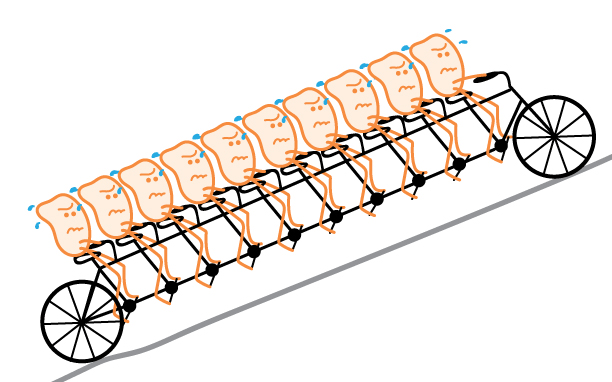
Jordan Wirfs-Brock / Inside Energy
When supply and demand are out of balance, and the grid can\’t stabilize frequency, power plants – or bicycle riders – begin to shut down. This can cause a domino effect that can known out the entire system.
Or in other words, when one power plant shuts down, it can have a domino effect that can knock out the entire grid.
So when frequency gets too far from 60 Hz, power plants shut down to avoid frying themselves. This is like when you run the hair dryer and the microwave at the same time and the circuit breaker trips to keep you from blowing up your appliances. But when a plant suddenly shuts down, all the other power plants still online have to work a bit harder to meet demand for electricity. Which means they, too, will be strained, and will shut down to protect themselves. This leads to something called cascading outages, which is exactly what it sounds like: Entire regions or cities could be in the dark.
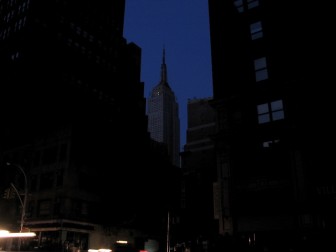
Brendan Loy / Flickr Creative Commons
The Empire State Building went dark during the Northeast blackout of 2003.
A good (but bad) example of a cascading outage is the Northeast blackout of 2003, which started with high temperatures and a few tripped transmission lines in Ohio and ended with 50 million people losing power in eight states and two Canadian provinces.
This was a wake-up call that reminded people that the interconnectivity of the grid is what makes it reliable and vulnerable to massive, cascading outages.
Renewables interact with the grid in a fundamentally different way than coal, hydro, and gas-fired power plants. When it comes to solar power, for example, the nerdy but essential qualities of inertia and frequency are flipped on their heads.







